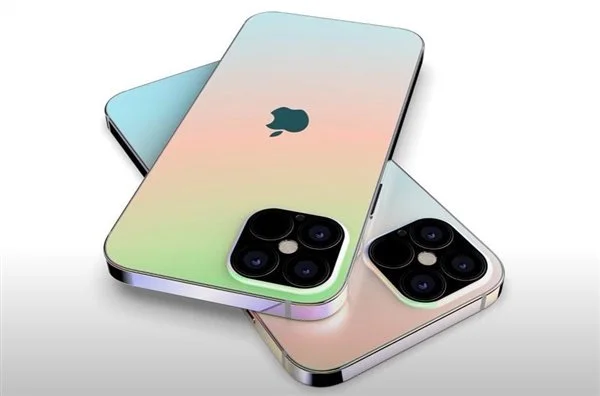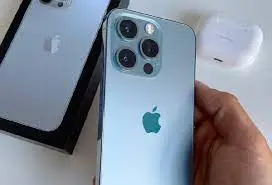IMEI Checker iPhone: IMEI stands for International Mobile Equipment Identity. Think of it as your phone’s fingerprint, a 15-digit number unique to each device. And phone carriers and manufacturers share IMEI numbers to enable tracking of smartphones that may be stolen or compromised. So the IMEI number matters because it can give information about the device type (Android or iOS), model number, network, country of origin, warranty information, date of purchase, and other details about the phone.
Also, Read- Android IMEI Checker, About IMEI, Apple IMEI Checker… Read More
Contents
8 Ways to Find the IMEI Number on Your iPhone or iPad
IMEI stands for International Mobile Equipment Identity. It is an industry standard shared between mobile carriers and manufacturers for security purchases. Your IMEI is important because you’ll need it for registration, support forms, or checking device history for theft.
Here, we’ll list all the ways you can find the IMEI number for your iPhone or iPad, whether it’s locked, locked or you don’t have it at all.
Use Dialer Codes (USSD Codes)
A quick way to find the IMEI number of your iPhone is by dialing *#06#. Once you press the call button after typing, a screen with your device information will pop up.
Check Your iPhone’s Settings
You can easily check the Settings app to find your IMEI number on any iPhone or cellular iPad. Go to General > About, and with a little scrolling, you will easily find the IMEI number of your iOS device.
Eject Sim Tray
If you desperately need your IMEI number but your device won’t turn on, take out the SIM tray. Unless you have an iPhone 6s or later, you will see the IMEI number printed on the SIM tray.
To be more specific, you can find this IMEI number at the bottom of the tray. If you still use the old iPhone, you can check out the following method.
Find the IMEI on the Back of Your iPhone
For iPhone 5, iPhone 5c, iPhone 5s, and iPhone 6/6 Plus, you will be able to find the IMEI number directly on the metal casing of the iPhone. To clarify, you can find it printed at the bottom center of the device.
Also, Read- Cricket Wireless IMEI Tracker, To find an articulate Cricket Account Number… Read More
Use the Finder on your Mac to find your iPhone’s IMEI
If you find that your iPhone is locked or you have an eSIM-only iPhone, you can use the Finder app on Mac to view the IMEI. This method will work on any Mac running macOS Catalina 10.15 or later.
After connecting your iPhone to your Mac using a Lightning to USB cable, open the Finder app and select your iPhone or cellular iPad from the sidebar. Then, go to the General tab and repeatedly click the area under the device’s name until it reveals the IMEI number.
Use iTunes on Windows to Find Your iPhone’s IMEI
Older Mac users who can no longer update their OS can find iPhone or iPad IMEI numbers using iTunes. This is also your only option if you have a Windows PC.
Once you connect your iPhone to your computer using the included Lightning to USB cable, open iTunes. Then, click Summary to view your Apple device’s information, including the IMEI number.

Find the IMEI Number on the iPhone’s Packaging
Many Apple fans keep the sleek, white box that came with their iPhone or iPad. If you’re one of the lucky few who has your IMEI number with you, you can find the IMEI number printed on a sticker on the box.
Go to the Apple ID Website
If you don’t have your iPhone or iPad with you but need the IMEI number, there may still be hope online. You can find your iPhone’s IMEI information from Apple’s website as long as the device is linked to your iCloud account.
To do this, go to appleid.apple.com on any browser. Then sign in to your Apple ID and view the list of devices. Once you find the device you need information about, click on the device name to display the IMEI number.
Why is your IMEI number important?
If you’re looking to buy a second-hand Apple device, the IMEI number is one of the best ways to find out how legit it is. Any history of theft, criminal activity, or carrier interception should be linked to a device using this number. Apart from this, IMEI numbers can also be necessary while talking to Apple Support. Using your iPhone’s IMEI number, Apple can quickly tell what model your device is, what year it was released, and whether the warranty covers it.
8 things to check before buying a secondhand iPhone online
Buying a second-hand iPhone online is risky. But you can minimize the risk by checking these things before making the payment.
When it comes to second-hand electronics, finding the right buyer isn’t as straightforward as simply reading the description. More often than not, electronics are expensive and require various checklists before purchasing. Those lists go double when buying a second-hand iPhone online.
Buying a second-hand iPhone online can seem like playing a game of Russian roulette. However, this should not be the case. There are many things that you can check with the seller before making a purchase.
Also, Read- US Cellular IMEI Checker, CDMA vs GSM, *228 Work on US Cellular, Preferred Roaming List… Read More

Here’s a quick checklist to help you out.
Proof of Purchase: IMEI Checker iPhone
Ask the seller to provide a soft or hard copy of the original receipt. The receipt should be able to tell you two important things: previous ownership and warranty status. Once you have the iPhone receipt, check whether the seller’s name or ID matches the recipient and purchase date.
This allows you to identify if the seller was the previous owner and if the iPhone is still under warranty. If the seller can’t provide a receipt, decide whether you haven’t been able to trace the ownership of the equipment. While some phones may still be in good condition after multiple owners, the security risks and potential for abuse are certainly high.
IMEI Number
To check whether the device’s specifications match the official receipt, ask the seller to find the IMEI (International Mobile Equipment Identity) number in Settings > General > About. Alternatively, ask them to dial *#06# and thus get the unique IMEI number.
The iPhone will then display the IMEI number, which you can check against the proof of purchase provided by the seller. You should also use IMEI.info to check the mobile device network, country, warranty, system version, and other features.
Serial Number
As well as the IMEI number, Apple issues serial numbers to all of its devices for warranty verification. To check the iPhone serial number, ask the seller to go to Settings > General > About.
With the serial number, you can actually get details such as when and where the iPhone was manufactured. You can also verify device specs as provided by the vendor and check service and support coverage on Apple’s website.
Part Authenticity
When checking for authenticity, ask the seller whether any previous repairs have been performed on the device and whether they were performed by an Apple-authorized service provider. Repairs in unauthorized centers may mean that the parts of the device may no longer be authentic.
Lower quality parts, such as the LCD, not only affect the visual experience of using the iPhone but also battery life, speed, and backlights. While it is much easier to check this in person, as an online buyer, you can still ask the seller questions about this.
Touch Test
Next, determine if both the physical keys and the screen are working. On a live video, ask the salesperson to press each physical button while paying attention to the iPhone’s response. Then ask the salesperson to demonstrate the basic iPhone hand gestures such as swipe, zoom, and tap.
Many older iPhones have issues with the Home or Touch ID buttons. So, if you’re buying a phone with a physical button, be sure to ask the seller to display these buttons, paying attention to the device’s responsiveness.

Camera Test: IMEI Checker iPhone
Apart from the absence of cracks in the camera of the iPhone, it is also important to check whether it works up to standard or not. In some instances, third-party repair centers have been known to swap out genuine iPhone camera parts with unauthorized ones.
When testing a second-hand iPhone camera, ask the seller to take photos with the device and show you the photos right after. Next, be sure to ask them to take photos using the front and rear cameras. Then, check to make sure the image looks clear and if the iPhone camera is still working.
Speaker Test
Faulty speakers are some of the most common indicators of a water-damaged iPhone. This damage is often not obvious because it is often inside the device, which makes it one of the most important things to check before buying a second-hand iPhone.
To check the health of the speaker, ask the online seller to set the iPhone to maximum volume. Then, send a quick outbound call or text to see if the sound isn’t constant. Alternatively, you can also ask them to play the music and adjust the volume throughout the test.
You can also ask the seller to put the iPhone on vibrate to hear if the vibrate function works. Next, ask them to place it on a hard surface like a wooden or steel table. Then, listen to see if the device is vibrating.
Battery Test
In electronic devices, batteries are often some of the most commonly damaged parts. Poor battery life can be the result of both normal use and poor charging practices. To check iPhone battery health, ask the old iPhone seller to open Settings > Battery > Battery Health.
It is important to understand that all rechargeable batteries have a limited lifespan. When it comes to buying second-hand, it’s best to manage your expectations on battery life. According to Apple, the iPhone battery should retain up to 80% of its capacity after 500 full charge cycles.
Battery health below 80% will cause iPhone performance to drop and may require an immediate replacement. Defective batteries can be replaced free of charge if the iPhone is still under warranty. Alternatively, Apple offers paid battery repair service for out-of-warranty iPhones.
Suggested Link:- US Latest Breaking News
@Ron